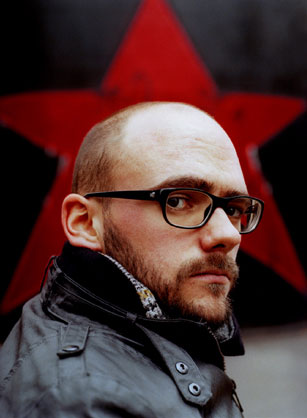Ryan Gander

Photo by Maarten Corbjin
A conceptual artist whose past works have included elements of architecture, language, typography, design, and city planning, Ryan Gander often weaves together narratives that grapple with the nature of art and object making, polemical ideas, and social norms. Born in 1976 in Chester, United Kingdom, Gander received his BA from Manchester Metropolitan University, United Kingdom (1999) and has undertaken graduate studies at Jan van Eyck Akademie, Maastricht (2000) and Rijksakademie van Beeldende Kunsten, Amsterdam (2002), both in The Netherlands. Recent solo exhibitions include G-Tokyo 2010, Mori Art Center Gallery, Tokyo Japan, collaboration with Aurelien Froment, Los Angeles (2010); As it presents itself – Somewhere vague, Art Unlimited, Basel, Switzerland (2010); It’s a right Heath Robinson affair (A stuttering exhibition in two parts), gbAgency and Kadist, Paris, France (2009); and Heralded as the New Black, Museum Boijmans Van Beuningen, Rotterdam, The Netherlands, Ikon Gallery, Birmingham, United Kingdom, and South London Gallery, London, United Kingdom (2008-9). Group exhibitions include Production Site: The Artist’s Studio Inside and Out, Museum of Contemporary Art, Chicago (2010); Manifesta 8, Mercia, Spain (2010); Chasing Napoleon, Palais de Tokyo, Paris (2009); Space at Medium, Miami Art Museum, Miami, FL (2009); The Malady of Writing, MACBA, Museu d’Art Contemporani de Barcelona, Spain (2009); Younger than Jesus, New Museum, New York (2009); and Wouldn’t It be Nice, Somerset House, London, Museum für Gestaltung, Zurich (2008) and Centre d’Art Contemporain, Geneva (2007). He is also the recent recipient of the Zurich Art Prize. Ryan Gander lives and works in London.
Video Interview
Audio Interview
(Requires Flash player)
On the first time Gander heard the story of The Happy Prince
(Requires Flash player)
On his first piece of public art
(Requires Flash player)
On The Happy Prince as a piece of public art
(Requires Flash player)
On the meaning of the story of The Happy Prince and how it relates to public art
(Requires Flash player)
On the accessibility of the work
(Requires Flash player)
On the experience of Gander’s The Happy Prince